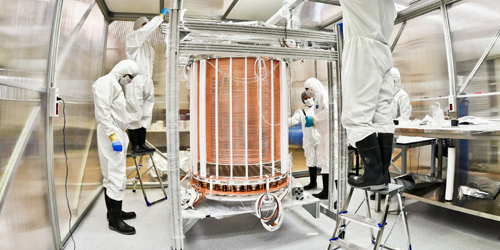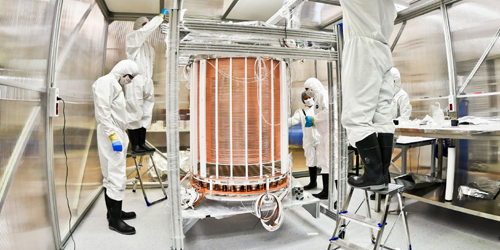New Analysis Tightens Constraints on Light Dark Matter
The XENON1T experiment, in Italy’s underground Gran Sasso National Laboratory, searches for flashes of light caused by dark matter particles interacting with two tons of liquid xenon. The experiment is designed to spot a hypothesized type of dark matter called a weakly interacting massive particle (WIMP), but researchers have begun to sift the data for other potential forms. By reanalyzing results from 2017 and 2018, the XENON1T team has tightened constraints on the properties of WIMPs and other dark matter candidates. Although unable to announce a detection, the researchers excluded candidate particles with a range of parameters, including certain hypothesized axion-like particles and dark photons.
The researchers analyzed the set of photon signals produced by electrons that are liberated when xenon atoms are struck by incoming particles. These photons are emitted when the electrons, driven by an electric field across the chamber, migrate to the gaseous xenon at the top of the experiment. Unlike photons produced immediately after a massive particle collides with a xenon nucleus, the process that creates these secondary photons is sensitive to lower-mass dark matter candidates.
To determine whether any detected photons were due to dark matter interactions, the team compared their data against a model of expected background events produced by non-dark-matter particles such as solar neutrinos. Because of the purity of the detector’s xenon and several technology upgrades, this background signal was at least one thousand times smaller than that of similar experiments. While no significant photon events stood out against the modeled background, the researchers could rule out a range of dark matter candidates of specific masses. They are now looking to the experiment’s next upgrade—XENONnT, scheduled to operate from 2020 with even fewer background events—to finally announce a detection.
This research is published in Physical Review Letters.
–Sophia Chen
Sophia Chen is a freelance science writer based in Tucson, Arizona.





